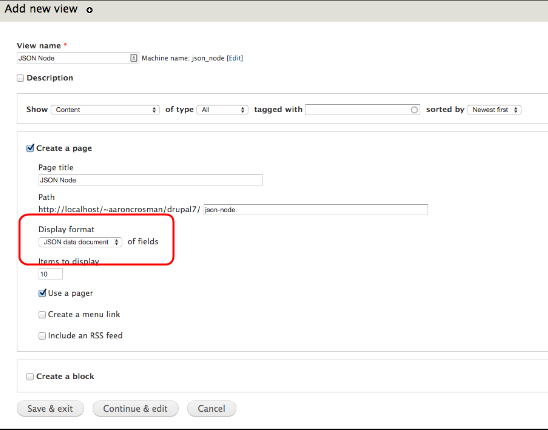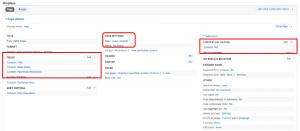This is part of my ongoing series about ways Drupal can be badly misused. These examples are from times someone tried to solve an otherwise interesting problem in just about the worst possible way.
I present these at SC Drupal Users Group meetings from time to time as an entertaining way to discuss interesting problems and ways we can all improve.
This one was presented about a year ago now (August 2015). Since I wasn’t working with Drupal 8 when I did this presentation the solution here is Drupal 7 (if someone asks I could rewrite for Drupal 8).
The Problem
The developer needed to support existing Flash training games used internally by the client. Drupal was used to provide the user accounts, game state data, and exports for reporting. The games were therefore able to authenticate with Drupal and save data to custom tables in the main Drupal database. The client was looking for some extensions to support new variations of the games and while reviewing the existing setup I noticed major flaws.
The Sinful Solution
Create a series of bootstrap scripts to handle all the interactions, turning Drupal into a glorified database layer (also while you’re at it, bypass all SQL injection attack protections to make sure Drupal provides as little value as possible).
The Code
There was a day when bootstrap scripts with a really cool way to do basic task with Drupal. If you’ve never seen or written one: basically you load bootstrap.inc, call drupal_bootstrap() and then write code that takes advantage of basic Drupal functions – in a world without drush this was really useful for a variety of basic tasks. This was outmoded (a long time ago) by drush, migrate, feeds, and a dozen other tools. But in this case I found the developer had created a series of scripts, two for each game, that were really similar, and really really dangerous. The first (an anonymized is version shown below) handled user authentication and initial game state data, and the second allowed the game to save state data back to the database.
As always the script here was modified to protect the guilty, and I should note that this is no longer the production code (but it was):
<?php
require_once './includes/bootstrap.inc';
drupal_bootstrap(DRUPAL_BOOTSTRAP_FULL); // "boot" Drupal
define("KEY", "ed8f5b8efd2a90c37e0b8aac33897cc5"); // set key
// check data
if(!(isset($_POST['hash'])) || !(isset($_POST['username'])) || !(isset($_POST['password']))) {
header('HTTP/1.1 404');
echo "status=100";
exit; // missing a value, force quit
}
// capture data
$hash = $_POST['hash'];
$username = $_POST['username'];
$password = $_POST['password'];
// check hash validity
$generate_hash = md5(KEY.$username.$password);
if($generate_hash != $hash) {
header('HTTP/1.1 404');
echo "status=101";
exit; // hash is wrong, force quit
}
// look for username + password combo
$flashuid = 0;
$query = db_query("SELECT * FROM {users} WHERE name = '$username' AND pass = '$password'");
if ($obj = db_fetch_object($query)){
$flashuid = $obj->uid;
}
if($flashuid == 0) {
header('HTTP/1.1 404');
echo "status=102";
exit; // no match found
}
// get user game information
$gamequery = db_query("SELECT * FROM {table_with_data_for_flash_objects} WHERE uid = '$flashuid' ORDER BY lastupdate DESC LIMIT 1");
if ($game = db_fetch_object($gamequery)){
$time = $game->time;
$round = $game->round;
$winnings = $game->winnings;
$upgrades = $game->upgrades;
} else {
// no entry, create one in db
$time = $round = $game_winnings = $long_term_savings = $bonus_list = "0";
$upgrades = "";
$insert = db_query("INSERT INTO {table_with_data_for_flash_objects} (uid, lastupdate) VALUES ('$flashuid',NOW())");
}
$points = userpoints_get_current_points($flashuid);
// echo success and values
header('HTTP/1.1 201');
echo "user_id=$flashuid&points=$points&ime=$time&round=$round&winnings=$winnings&upgrades=$upgrades";
?>
Why is this so bad?
It’s almost hard to know where to be begin on this one, so we’ll start at the beginning.
- Bootstrap scripts are not longer needed and should never have been used for anything other than a data import or some other ONE TIME task.
- That key defined in line 3, that’s used to track sessions (see lines 20-21). If you find yourself having to recreate a session handler with a fixed value, you should assume you’re doing something wrong. This is a solved problem, if you are re-solving it you better be sure you know more than everyone else first.
- Error handling is done inline with a series of random error status codes that are printed on a 404 response (and the flash apps ignored all errors). If you are going to provide an error response you should log it for debugging the system, and you should use existing standards whenever possible. In this case 403 Not Authorized is a far better response when someone fails to authenticate.
- Lines 15-17, and then line 30: a classic bobby tables SQL Injection vulnerability. Say goodbye to security from here on in. They go on to repeat this mistake several more times.
- Finally, just to add insult to injury, the developer spends a huge amount of time copying variables around to change their name: $password = $_POST[‘password’]; $round = $game->round; There is nothing wrong just using fields on a standard object, and while there is something wrong with just using a value from $_POST, copying it to a new variable does not make it trustworthy.
Better Solutions
There are several including:
- Use a custom menu to define paths, and have the application just go there instead.
- Use Services module: https://www.drupal.org/project/services
- Hire a call center to ask all your users for their data…
If I were starting something like this from scratch in D7 I would start with services and in D8 I’d start with the built-in support for RESTful web services. Given the actual details of the situation (a pre-existing flash application that you have limited ability to change) I would go with the custom router so you can work around some of the bad design of the application.
In our module’s .module file we start by defining two new menu callbacks:
function hook_menu() {
$items['games/auth'] = array(
'title' => 'Games Authorization',
'page callback' => 'game_module_auth_user',
'access arguments' => array('access content'),
'type' => MENU_CALLBACK,
);
$items['games/game_name/data'] = array( // yes, you could make that a variable instead of hard code
'title' => 'Game Data',
'page callback' => 'game_module_game_name_capture_data', // and if you did you could use one function and pass that variable
'access arguments' => array('player'),
'type' => MENU_CALLBACK,
);
return $items;
}
The first allows for remote authentication, and the second is an endpoint to capture data. In this case the name of the game is hard coded, but as noted in the comments in the code you could make that a variable.
In the original example the data was stored in a custom table for each game, but never accessed in Drupal itself. The table was not setup with a hook_install() nor did they need the data normalized since its all just pass-through. In my solution I switch to using hook_install() to add a schema that stores all the data as a blob. There are tradeoffs here, but this is a clean simple solution:
...
'fields' => array(
'recordID' => array(
'description' => 'The primary identifier for a record.',
'type' => 'serial',
...
'uid' => array(
'description' => 'The user ID.',
'type' => 'int',
...
'game' => array(
'description' => 'The game name',
'type' => 'text',
...
'data' => array(
'description' =>'Serialized data from Game application',
'type' => 'blob',
...
You could also take this one step further and make each game an entity and customize the fields, but that’s a great deal more work that the client would not have supported.
The final step is to define the callbacks used by the menu items in hook_menu():
function game_module_auth_user($user_name = '', $pass = '') { // Here I am using GET, but I don’t have to
global $user;
if($user->uid != 0) { // They are logged in already, so reject them
drupal_access_denied();
}
$account = user_authenticate($user_name, $pass);
//Generate a response based on result....
}
function game_module_[game_name]_capture_data() {
global $user;
if($user->uid == 0) { // They aren’t logged in, so they can’t save data
drupal_access_denied();
}
$record = drupal_get_query_parameters($query = $_POST); // ← we can work with POST just as well as GET if we ask Drupal to look in the right place.
db_insert('game_data')
->fields(array(
'uid' => $user->uid,
'game' => '[game_name]',
'data' => serialize($record),
))
->execute();
// Provide useful response.
}
For game_module_auth_user() I use a GET request (mostly because I wanted to show I could use either). We get the username and password, have Drupal authenticate them, and move on; I let Drupal handle the complexity.
The capture data callback does pull directly from the $_POST array, but since I don’t care about the content and I’m using a parameterized query I can safely just pass the information through. drupal_get_query_parameters() is a useful function that often gets ignored in favor of more complex solutions.
So What Happened?
The client had limited budget and this was a Drupal 6 site so we did the fastest work we could. I rewrote the existing code to avoid the SQL Injection attacks, moved them to SSL, and did a little other tightening, but the bootstrap scripts remained in place. We then went our separate ways since we did not want to be responsible for supporting such a scary set up, and they didn’t want to fund an upgrade. My understanding is they heard similar feedback from other vendors and eventually began the process of upgrade. You can’t win them all, even when you’re right.
Share your sins
I’m always looking for new material to include in this series. If you would like to submit a problem with a terrible solution, please remove any personally identifying information about the developer or where the code is running (the goal is not to embarrass individuals), post them as a gist (or a similar public code sharing tool), and leave me a comment here about the problem with a link to the code. I’ll do my best to come up with a reasonable solution and share it with SC DUG and then here. I’m presenting next month so if you have something we want me to look at you should share it soon.
If there are security issues in the code you want to share, please report those to the site owner before you tell anyone else so they can fix it. And please make sure no one could get from the code back to the site in case they ignore your advice.

